Research Blog Post - Week 5
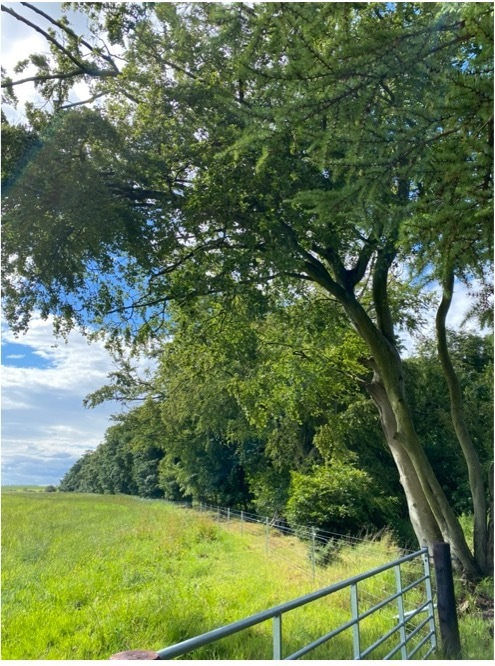
Initially, I proposed a research project solely on reforestation and its potential as a nature-based solution for climate change mitigation. As with all aspects of life, things change, and my research project was adjusted accordingly. In the beginning of my 6-week project I met with two kind people who worked for St Andrews Forest Project, the programme manager and the biodiversity advisor. St Andrews Forest Project is a reforestation project that the University of St Andrews has introduced to reduce its carbon footprint through carbon sequestration (the uptake of carbon from the atmosphere) and to improve the sustainability of ecosystems. After the meeting, where we discussed the feasibility of sampling at the site I had in mind and consulting my supervisor, Professor William Austin, who I have been very lucky to work with, it was concluded that the saplings planted for the St Andrews Forest Project were at a growth stage which would most likely be too premature to measure any significant carbon sequestration results. It was therefore decided that I needed to look for a sample site with more mature woodland.
My supervisor and I then narrowed down our options and came to conclude that East Neuk Estate, a farming estate, was the most appropriate sample site. My research project was therefore shaped to incorporate this change into a project that focused on how carbon sequestration differs between different areas of land use across agricultural land including woodland areas within the estate. This was a slight set back and did take time to arrange. However, looking back I am very grateful that my project was adjusted in this way because analysing the comparisons between different land use areas has been fascinating and has made my sampling process rewarding. Altogether, the admin side of the project such as the meeting mentioned above, meetings to consolidate and gain permission to conduct my research on East Neuk Estate, a site visit with my supervisor and filling out risk assessments took two weeks.
In week three, following the approval of the risk assessment, I could finally get out into the field (quite literally). My sampling plan involved sampling 20 fields across the estate. The 20 fields were split into 3 gradients and 8 land use types. Fields were sampled by obtaining soil scrapes with a trowel to measure the level of carbon sequestration within the soil from that particular land use location. Five samples were taken in each field to calculate a field average, with a total of 100 samples. I thoroughly enjoyed sampling, both the environment and collecting the samples themselves. However, it is important to mention that I grossly underestimated the time it would take me to sample. It took approximately a week, but the days were long and physically demanding. Despite this, it did not impede my enjoyment, I would happily do it all over again.
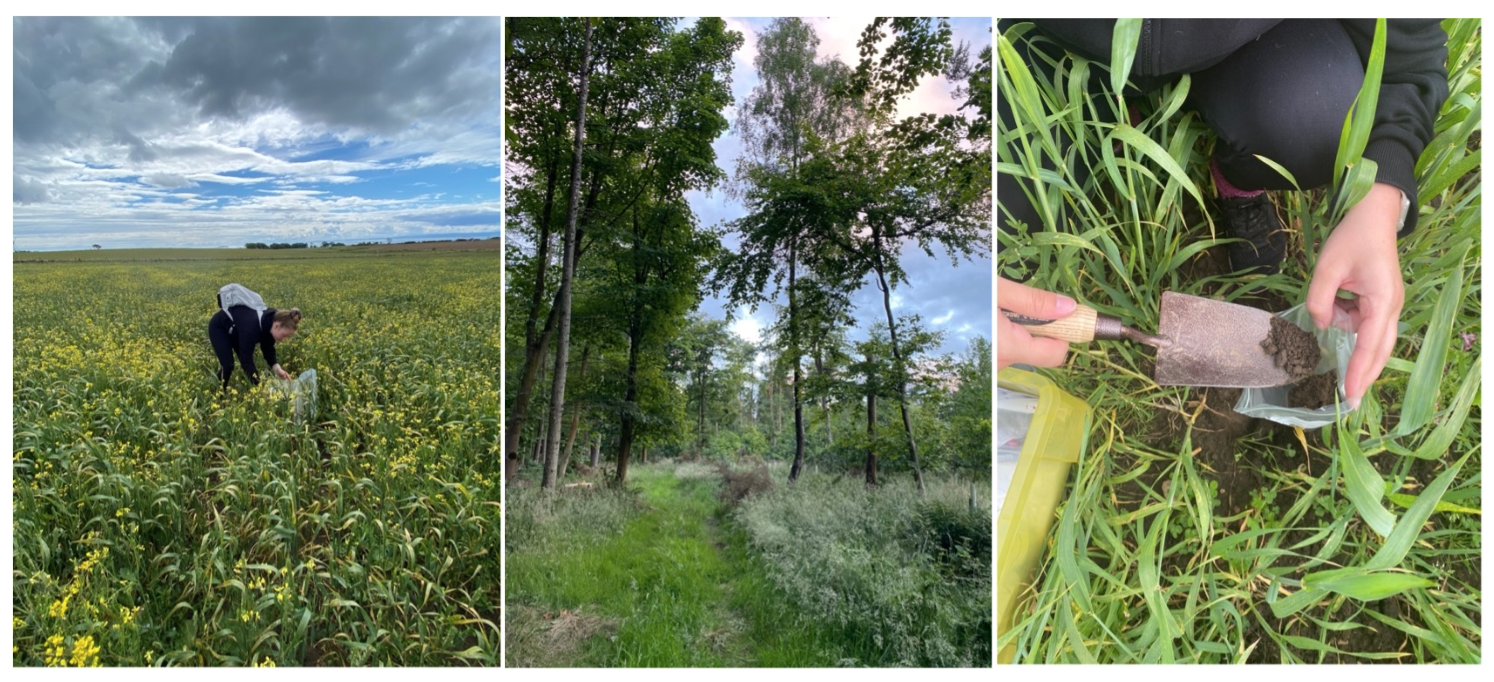
A small collection of photos from the sample sites.
Similarly, I thoroughly enjoyed my experience in the Irvine laboratory. My lab supervisor, Dr William Hiles, was incredibly helpful with introducing me to lab protocol and procedures. It was my first time in a proper laboratory which at first was a little intimidating but as soon as I dived into my analysis excitement and fascination took over and I quickly felt comfortable conducting my methods. The entirety of week four was spent in the lab analysing my soil samples. I conducted analysis on moisture content by drying the soil in an oven, bulk density by water displacement and organic content by burning soil samples in a furnace. More detailed explanations of the methods I used to analyse my soil samples will follow shortly in my full research report. I am currently in week 5 writing up my report. I am so far happy with the results and I'm very much looking forward to seeing how all my research comes together.
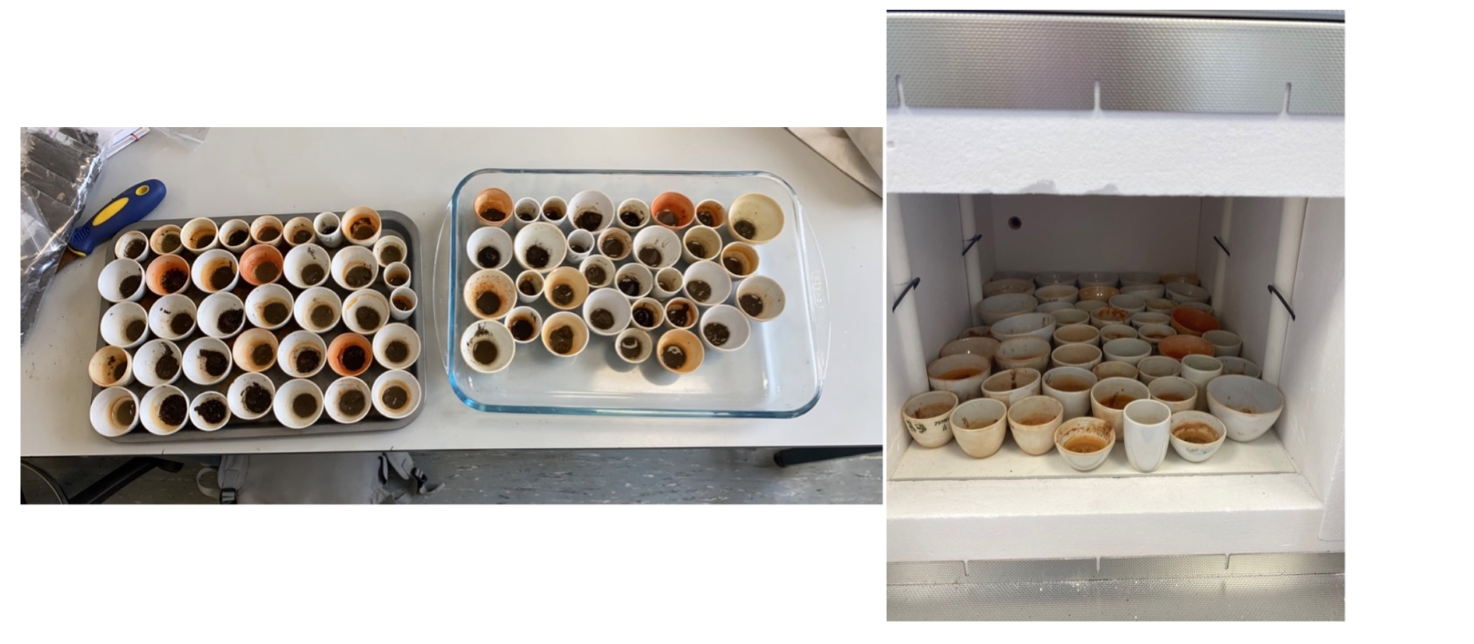
Photos of soil samples in crucibles before and within the furnace.
The following are reflections on my progress and the Laidlaw Programme so far:
- I highly recommend being in St Andrews (or your respective University’s the city/town) for the full duration of the Laidlaw Summer Programme. I missed the first two weeks of the programme due to circumstances out of my control and I do feel that missing the initial bonding activities with other scholars in my cohort effected by approach down the line.
- I would also recommend started admin before the official start date of your project (future research scholars you can thank me later).
- Action learning sets are very useful. I would like to thank my group for being so lovely and kind to one another. I think we had two great meetings and shared some really effective advice.
- I would also like to thank my supervisor, Professor William Austin, he has been a huge help and I have really enjoyed working with him.
- I love practical field work and lab analysis and my confidence with both has definitely improved.
Overall, my progress with the Laidlaw Programme so far has confirmed that this area of research is something that I am certainly interested in pursuing. I am excited to conclude my findings and finish my report and to carry the new skills I have learnt to future opportunities.
(all photos were originals)

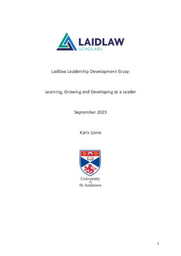
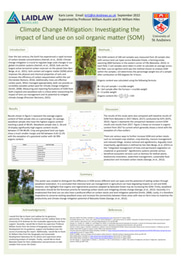
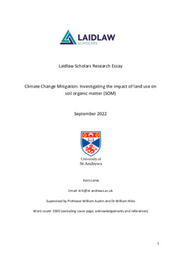
Please sign in
If you are a registered user on Laidlaw Scholars Network, please sign in